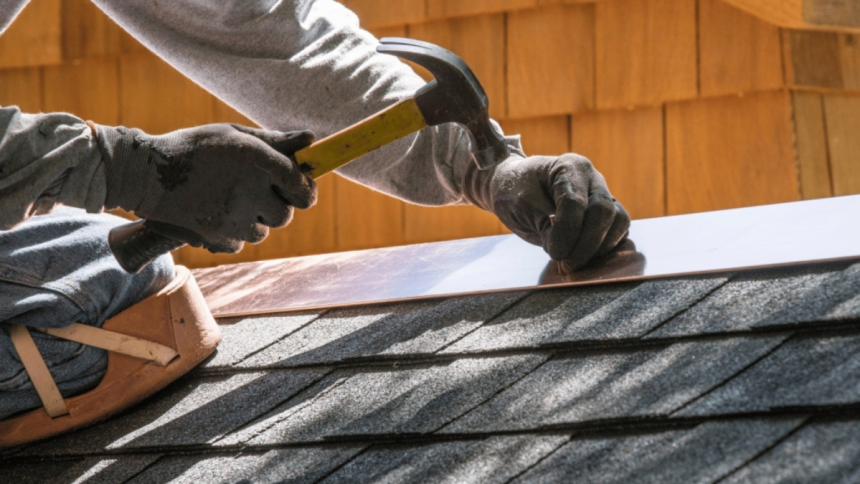Roofs are built to last, but “how long” is a question with more than one answer. The lifespan of a roof isn’t determined solely by the material installed—it’s shaped by climate, craftsmanship, maintenance routines, and even what sits above or below the surface.
Many homeowners assume a new roof means two or three decades of no concern. That’s not always the case. Each component—shingles, underlayment, flashing—ages differently. Environmental conditions vary dramatically from one region to another. And even the most durable roofs can fail early when maintenance is ignored.
Whether you’re building, buying, or maintaining a home, understanding what truly influences roof longevity can help you make better decisions and protect your investment for the long haul.
Material Type: The First Lifespan Indicator
The type of roofing material is the clearest and most direct factor in determining how long a roof should last under ideal conditions.
- Asphalt shingles, the most common residential material, typically last between 15 to 30 years depending on thickness and quality.
- Metal roofs can endure for 40 to 70 years with proper care.
- Tile roofing, made from clay or concrete, can last 50 to 100 years but is heavier and requires structural reinforcement.
- Slate roofs, often seen on historic or high-end homes, can remain functional for over a century.
Of course, these ranges assume perfect installation and ideal weather—two conditions that aren’t always guaranteed. While choosing quality material is essential, it’s only part of the equation.
Weather Extremes and Regional Factors
Climate plays a massive role in aging your roof. A material rated for 30 years may only last 20 in a region prone to intense sunlight, frequent hail, or sudden temperature swings.
Here’s how different weather conditions affect durability:
- Heat and UV radiation break down asphalt and cause brittleness over time.
- Heavy snow and ice place weight on the roof and promote moisture seepage as snow melts and refreezes.
- Strong winds can lift shingles or loosen flashing, increasing the chance of leaks.
- Hail causes bruising and surface granule loss that weakens long-term performance.
- Humidity and rain foster mold growth and can infiltrate layers of roofing when water doesn’t drain correctly.
That’s why consulting a local expert—like a trusted roofing company familiar with your region—is so important when selecting materials or planning for inspections. What works in a dry, temperate zone might deteriorate quickly in a tropical or high-altitude environment.
Installation Quality and Technique
Even the most durable material can’t perform without proper installation. Poor alignment, improper nailing, or incorrectly sealed valleys all reduce a roof’s lifespan from the start. In many cases, early signs of roof failure stem not from the material but from workmanship errors.
A well-installed roof should:
- Allow proper ventilation to prevent moisture buildup in the attic
- Feature accurately placed flashing and underlayment layers
- Include ridge caps and seals at all termination points
- Ensure uniform alignment to prevent water pooling or wind uplift
Choosing licensed roof installation experts in Houstonincreases your chances of quality work. The difference in lifespan between a roof installed by professionals versus one with shortcuts can be a decade or more.
Maintenance: The Long-Term Multiplier
Consistent maintenance is where most roofs either lose or gain years. Roofs are often forgotten once installed, but small issues compound quickly if ignored.
Simple maintenance steps that extend longevity include:
- Clearing debris from gutters and valleys to avoid water backup
- Inspecting flashing and sealants around vents or chimneys for cracks or lifting
- Checking for moss or algae, which can trap moisture and deteriorate surfaces
- Examining shingles after severe weather for curling, cracking, or displacement
Annual or seasonal inspections, even without signs of damage, can catch vulnerabilities early. Preventive maintenance isn’t just about prolonging lifespan—it’s about avoiding sudden and expensive repairs.
While many homeowners take a reactive approach, the roof rewards those who stay ahead.
Ventilation and Insulation: The Unseen Influencers
Often overlooked, your attic ventilation and insulation directly impact how well a roof ages. Without adequate airflow, heat and moisture get trapped below the roof deck, leading to:
- Shingle warping
- Condensation and mold growth
- Ice dams in winter climates
- Accelerated underlayment decay
Proper ventilation maintains a balanced temperature across the roof deck, which preserves materials and reduces expansion/contraction cycles. Likewise, insulation keeps energy bills in check and prevents air leaks that can introduce moisture.
A quality roofing company will assess your entire roofing system, not just the surface, to ensure these components are working together.
Tree Coverage and Environmental Exposure
The surrounding environment also affects how long a roof lasts. Trees that overhang your roof may provide shade—but they also drop leaves, branches, and sap. Over time, this buildup retains moisture and accelerates moss growth.
If trees are close enough for branches to touch the roof during wind, physical damage is also a risk. Regular pruning can minimize impact and reduce the need for extra cleanings or premature repairs.
In urban environments, pollution and air quality can also affect how materials degrade—especially metal roofing, which may corrode faster in coastal or industrial areas.
Roof Age Isn’t Everything
Just because a roof is 10 or 15 years old doesn’t mean it’s on the verge of failure. Likewise, a five-year-old roof with poor installation or storm damage may already be underperforming.
Age should be used as a guideline, not a definitive answer. Instead, condition-based assessment—looking at visible wear, material integrity, and system function—is the best way to determine remaining life.
Companies like Strive Roofing & Construction typically recommend annual check-ups once a roof is more than 10 years old, regardless of material. This allows for small repairs that extend life without requiring total replacement.
Final Thought: Lifespan is Earned, Not Guaranteed
Roof longevity is the result of layered decisions—not just the material you choose, but how it’s installed, maintained, and adapted to your home’s conditions. Every roof has a story, and how long it lasts is shaped by everything from weather patterns to how often the gutters are cleaned.
Whether you’re planning a roof replacement or trying to preserve the one you have, treating your roof as a system—and not just a surface—is the first step toward maximizing its potential lifespan.
Lynn Martelli is an editor at Readability. She received her MFA in Creative Writing from Antioch University and has worked as an editor for over 10 years. Lynn has edited a wide variety of books, including fiction, non-fiction, memoirs, and more. In her free time, Lynn enjoys reading, writing, and spending time with her family and friends.















